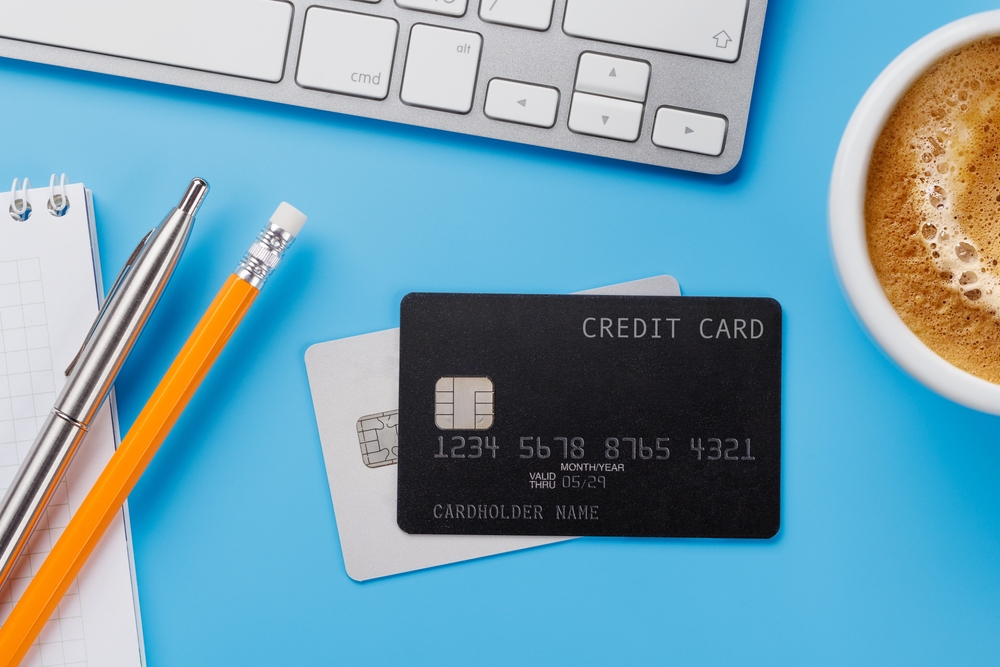With the average American household saddled with over $6,000 in credit card debt, it’s time to break out the financial sage and cleanse that debt right out of your life. We’re talking straight-up strategies that you can start using today. Whether it’s understanding your interest rates or getting savvy with your spending, these methods aren’t rocket science—they’re simply smart moves that can finally help you kick that debt to the curb. Ready to get started? Let’s dive into these 13 game-changing hacks.
1. Know Your Numbers

The first step to conquering credit card debt is understanding exactly what you’re up against. Take a good hard look at your statements, and jot down your balances, interest rates, and minimum payments. It’s not fun, but it’s crucial—like pulling off a Band-Aid. According to a study by the National Foundation for Credit Counseling, people who regularly check their credit card statements are more likely to pay down their debts than those who don’t. Once you have the full picture, you’ll be able to prioritize which debts to tackle first, usually starting with the highest interest rates.
Once you have a clear understanding of your debts, set small, achievable goals. Break down your total debt number into more manageable chunks, so it feels less daunting. Set a timeline for each chunk and start knocking them out one by one. Celebrate each small victory to keep your momentum going. You’ll be surprised at how motivating tiny wins can be in your journey to financial freedom.
2. Cut the Card

If you’re not using a credit card responsibly, it might be time to part ways. Cutting up your card can prevent you from making impulse purchases that only add to your debt. It’s a bold move, but sometimes bold is exactly what you need. Once you cut the card, focus on using cash or a debit card to manage your day-to-day expenses. You’ll find that the act of physically handing over cash makes you think twice about unnecessary purchases.
Going cold turkey might seem extreme, but it can also lead to a big mental shift. Without the safety net of a credit card, you may start to budget more carefully. You’ll also be forced to prioritize your spending, which is a good habit to cultivate. While there’s no need to be overly frugal, being mindful of your spending can make a world of difference. After all, breaking the credit card cycle starts with changing how you think about money.
3. Transfer Your Balance

A balance transfer can be a smart move, particularly if you’re dealing with high-interest rates. Many credit cards offer introductory 0% APR on balance transfers for a limited time, which can give you breathing room to pay down debt without interest piling up. Consumer Reports suggests comparing different balance transfer offers to find the one that benefits you most. Make sure to read the fine print, as some cards charge a fee for balance transfers. While this tactic won’t erase your debt, it can give you a head start by stopping the interest clock.
Remember that the key to making a balance transfer work is discipline. You must commit to paying off the balance before the promotional period ends. Otherwise, you risk being hit with even higher interest rates than before. Set up automatic payments to ensure you’re meeting your goals. If you’re diligent, a balance transfer can be a strategic way to manage your debt more effectively.
4. Try The Snowball Method

The snowball method focuses on paying off your smallest debts first, gaining momentum as you go. It’s not necessarily the most cost-effective in terms of interest, but it’s powerful from a psychological standpoint. Start by listing all your debts from smallest to largest, ignoring the interest rates for now. Pay the minimum on everything except the smallest debt; for that one, pay as much as you can. Each time you eliminate a debt, you’ll feel a sense of accomplishment, motivating you to tackle the next one.
This method works because it provides quick wins, helping you stay motivated. Don’t underestimate the emotional benefit of seeing a debt disappear from your list. Once your smallest debts are gone, roll those payments into the next smallest debt, and so on. Over time, your snowball will gain momentum and you’ll be tackling larger debts with ease. It’s all about creating a positive feedback loop that keeps you engaged in the process.
5. Visualize Your Goals

Visualization can be a powerful motivator in achieving your financial goals. Picture what your life will look like once you’re free of credit card debt. What will you do with the money you were using to pay off debt? How will your stress levels change? Envisioning these positive outcomes can keep you motivated when the going gets tough.
Create a vision board or write down your goals and keep them somewhere visible. Seeing these tangible reminders can make your future financial freedom feel more real and attainable. Whenever you’re tempted to stray from your debt repayment plan, revisit your goals. Let these visual cues remind you of why you’re making sacrifices now. Staying focused on the bigger picture can keep you on track and committed to your journey of becoming debt-free.
6. Automate Your Payments

One of the simplest ways to stay on top of your debt is to automate your payments. This ensures you never miss a due date, which can often lead to hefty fees and increased interest rates. Set up automatic transfers from your bank account to your credit card before the due date each month. This not only keeps your payments on time but also helps you avoid the temptation to spend that money elsewhere. The less you have to think about it, the more likely you are to stick to your debt-payoff plan.
Automation can also help you stick to a budget. Knowing that a certain amount will automatically go to your credit card debt each month forces you to work around it. It’s like taking your future self into account with every spending decision you make. By treating your debt payment like any other non-negotiable bill, you’re more likely to prioritize it over unnecessary expenses. Over time, those automated payments will bring you closer to financial freedom.
7. Start A Side Hustle

If your current income isn’t enough to tackle your debt as quickly as you’d like, consider taking on a side hustle. Whether it’s freelancing, driving for a ride-share service, or selling handmade goods, there are countless ways to earn extra cash. Forbes reports that 45% of working Americans have a side hustle, providing them with additional income to pay down debts faster. Choose something that fits your skills and schedule, and dedicate that extra income solely to debt repayment. A side hustle can not only boost your income but also offer valuable skills that could benefit your main career.
Balancing a side hustle with your regular job can be challenging, but the extra income can make a significant difference. Take advantage of flexible hours or remote work opportunities to fit the side hustle seamlessly into your life. Remember, the aim is to pay down debt faster, so discipline is key—don’t let that additional income get absorbed into everyday spending. Once you’ve paid off your debt, you can reassess whether to keep the hustle for extra savings or take a well-deserved break. In the meantime, each extra dollar brings you closer to financial freedom.
8. Negotiate Lower Rates

Sometimes, you can negotiate your credit card interest rates with a simple phone call. Contact your credit card company and ask if they can offer a lower rate, especially if you’ve been a longstanding customer with a good payment history. It might feel intimidating, but remember: the worst they can say is no. Highlight any competing offers you’ve received from other companies, and see if they’re willing to match or beat those rates. A lower interest rate means you’re paying less in finance charges, which makes the debt easier to tackle.
Persistence is important when negotiating rates. If you don’t succeed the first time, consider calling back at a different time or speaking with a different representative. Some companies are more willing to negotiate than others, so don’t take a single “no” as the final answer. Even a small reduction in your interest rate can lead to significant savings over time. By negotiating, you’re taking control of your financial situation, showing both confidence and responsibility.
9. Budget for Fun

Creating a strict budget doesn’t mean you have to cut out all the fun in your life. In fact, setting aside a small amount for entertainment can prevent burnout. Allocate a reasonable portion of your income for things you genuinely enjoy, like dining out or that yoga class you love. Knowing you have a little wiggle room makes it easier to stick to your budget for necessities and debt repayment. This balance is crucial for long-term success because being too strict can lead to impulse splurging.
A balanced budget that includes fun money can actually help you pay down debt faster. When you’re not feeling deprived, it’s easier to stay disciplined. Use this budgeted fun as a reward system for meeting your financial goals. For example, treat yourself to a nice dinner once you pay off a particular debt. This approach helps you associate financial responsibility with positive experiences, making it more sustainable in the long run.
10. Engage In Mindful Spending

Mindful spending involves being conscious of your financial choices and their impact. Before making any purchase, ask yourself if it aligns with your goals and values. This practice helps you avoid impulse buys and keeps your spending in check. With mindful spending, you become more aware of where your money is going and why. Over time, these small decisions add up, freeing up more resources to pay down your debt.
Becoming mindful with your spending can also help you identify patterns and triggers. You might notice that you tend to shop when you’re stressed or bored. Recognizing these patterns can help you find healthier ways to cope, reducing the need for retail therapy. Keep a journal or use a spending app to track your purchases and thoughts. By gaining insight into your habits, you can make more informed financial choices.
11. Consolidate Your Debt

Debt consolidation involves combining multiple debts into a single loan with a lower interest rate. This can make your debt easier to manage, as you’ll have just one payment to focus on. It can also reduce the total interest you’ll pay over time. However, it’s essential to weigh the pros and cons and ensure you’re not falling into a longer repayment period that costs more. Debt consolidation works best when you use it as part of a broader plan to become debt-free.
Before proceeding, shop around for the best consolidation loan terms. Compare interest rates, fees, and repayment terms from different lenders. Be cautious of predatory lenders who might offer attractive terms upfront but stick you with hidden fees. A reputable financial advisor can help you determine if consolidation is the right choice for you. Remember, consolidation is a tool, not a cure-all; it requires discipline and commitment to paying off your debt.
12. Get Clued Up About Finance

Improving your financial literacy can empower you to make smarter money decisions. Equip yourself with knowledge about personal finance, debt management, and credit scores. Many free resources are available online, including courses, articles, and podcasts. The more you understand financial concepts, the better equipped you’ll be to navigate your debt repayment journey. Knowledge is power, and in this case, it’s also money saved.
Make learning about finance a part of your routine. Dedicate time each week to read a financial article or listen to a money-focused podcast. The insights you gain can provide practical tips and strategies you can apply immediately. As you build your financial knowledge, you’ll feel more confident in your ability to manage your money effectively. Over time, this confidence will translate into smarter financial choices and a reduced debt load.
13. Use The Avalanche Method

The avalanche method is similar to the snowball method, but instead of focusing on the smallest debt, you target the one with the highest interest rate. This method can save you more money over time because you’re eliminating high-interest debt first. According to NerdWallet, people who use the avalanche method can potentially save hundreds, if not thousands, in interest payments compared to the snowball method. List your debts by interest rate, from highest to lowest, and attack the highest one with every spare penny. As each high-interest debt gets paid off, move on to the next one on the list.
The avalanche method requires patience, as you won’t see debts disappear as quickly as with the snowball method. However, the long-term savings are worth it. Knowing that you’re minimizing the amount you’ll pay in interest can be hugely motivating. Just like the snowball method, it’s crucial to stay disciplined and consistent. Over time, the avalanche will pick up speed, and you’ll see significant progress.
This article is for informational purposes only and should not be construed as financial advice. Consult a financial professional before making investment or other financial decisions. The author and publisher make no warranties of any kind.








